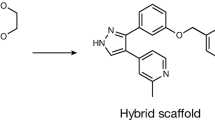Abstract
SEVERAL antibiotics are being used as antitumour agents because of their cytotoxic activity against both proliferating and non-proliferating cells1 but the doses of the substances given to patients are largely judged by empirical observations. Clearly it would be more satisfactory if the antitumour activity could be measured in the laboratory. It has already been reported2 that HeLa cells, normally unable to grow in the mouse, will develop into a rapidly growing tumour if the immune mechanism of the mouse has been suppressed by antilymphocyte serum (ALS). Such an animal may be most useful for measuring the antitumour activity of drugs and the purpose of this report is to describe our early findings.
This is a preview of subscription content, access via your institution
Access options
Subscribe to this journal
Receive 51 print issues and online access
$199.00 per year
only $3.90 per issue
Buy this article
- Purchase on Springer Link
- Instant access to full article PDF
Prices may be subject to local taxes which are calculated during checkout
Similar content being viewed by others
References
Young, W., Amer. J. Clin. Pathol., 52, 130 (1969).
Stanbridge, E. J., and Perkins, F. T., Nature, 221, 80 (1969).
Levey, R. H., and Medawar, P. B., Proc. US Nat. Acad. Sci., 56, 1130 (1966).
Author information
Authors and Affiliations
Rights and permissions
About this article
Cite this article
CURTIS, K., PERKINS, F. Measurement of Antitumour Activity of Actinomycin D. Nature 229, 198–199 (1971). https://doi.org/10.1038/229198a0
Received:
Issue Date:
DOI: https://doi.org/10.1038/229198a0
This article is cited by
-
Inhibitory effect of streptonigrin on a murine sarcoma virus-induced tumor cell line (MSC) and selection of drug-resistant clones
In Vitro (1973)
-
Antitumour activity of mithracin
Medical Microbiology and Immunology (1972)
-
The role of host site in bone induction by transplanted xenogenic epithelial cells
Calcified Tissue Research (1971)
Comments
By submitting a comment you agree to abide by our Terms and Community Guidelines. If you find something abusive or that does not comply with our terms or guidelines please flag it as inappropriate.



